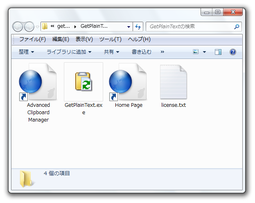

axios.request(config) axios.get(url) lete(url) axios.head(url) axios.options(url) axios.post(url]) axios.put(url]) axios.patch(url]) axios.postForm(url]) axios.putForm(url]) axios.patchForm(url]) NOTE axios(config) // Send a POST request axios ( ) axios(url) // Send a GET request (default method) axios ( '/user/12345' ) Request method aliasesįor convenience aliases have been provided for all supported request methods.
#Request js get plain text Pc#
If you want to test the function on your PC locally, restart your browser with the following command (supported by all browsers except safari): yournavigator.Requests can be made by passing the relevant config to axios. Accept: text/plain, text/html Accept: text/x-dvi q.8 mxb100000 mxt5.0, text/x-c Wildcards In order to save time, and also allow clients to receive content types of which they may not be aware, an asterisk '' may be used in place of either the second half of the content-type value, or both halves. The type of request is dictated by the optional async argument (the third argument) that is set on the XMLHttpRequest.open () method. When getData () is run, we create a new request using the Request () constructor, then use it to fetch a specific. It's just a small gift to contibute to the group. A request made via XMLHttpRequest can fetch the data in one of two ways, asynchronously or synchronously. One solution supporting older browsers: function httpRequest() ) Var info = eval ( "(" + xmlHttp.responseText + ")" ) ĭocument.getElementById( "TextBoxCustomerName" ).value = ĭocument.getElementById( "TextBoxCustomerAddress" ).value = 1 If ( xmlHttp.responseText = "Not found" )ĭocument.getElementById( "TextBoxCustomerName" ).value = "Not found" ĭocument.getElementById( "TextBoxCustomerAddress" ).value = "" If ( xmlHttp.readyState = 4 & xmlHttp.status = 200 ) XmlHttp.onreadystatechange = ProcessRequest Var Url = "GetCustomerInfoAsJson.aspx?number=" + CustomerNumber Var CustomerNumber = document.getElementById( "TextBoxCustomerNumber" ).value The Hypertext Transfer Protocol (HTTP) is an application protocol for distributed, collaborative, hypermedia information systems. Over the years, XMLHttpRequest has become a fundamental building block for making asynchronous HTTP requests in web applications. Additionally, since you've told express that static assets can be found at /public, there's no need to include that directory when requesting them. We use the Fetch API and the Axios library. Although the name suggests that it is specifically designed for XML data, XMLHttpRequest can be used to request and handle a variety of data formats, such as JSON, HTML, and plain text. In this way your index.html would be served at the root but your javascript assets could still be reached because you aren't serving index.html for every request.
#Request js get plain text how to#
Using API Data with CSS and Styling The plain text version of API data is ugly. last modified JanuIn this article we show how to create HTTP GET and POST requests in JavaScript. This is what many API's do: they dispense plain text, for you to style and display in your webpage.

In the case below, an ASPX page (that's servicing as a poor man's REST service) is being called to return a JavaScript JSON object. You can go to the link by clicking on the link in return you'll see a text snippet.

But, as previously mentioned, you'd be much better off with a JavaScript library. You have to pass the URL for the request.
#Request js get plain text code#
Here is code to do it directly with JavaScript. You can get an HTTP GET request in two ways: This approach based on xml format.


 0 kommentar(er)
0 kommentar(er)
